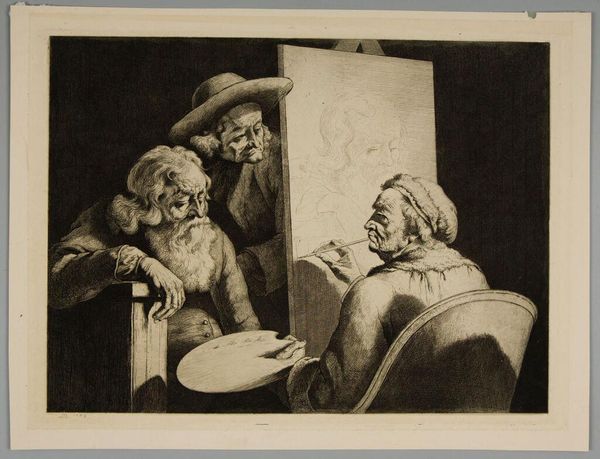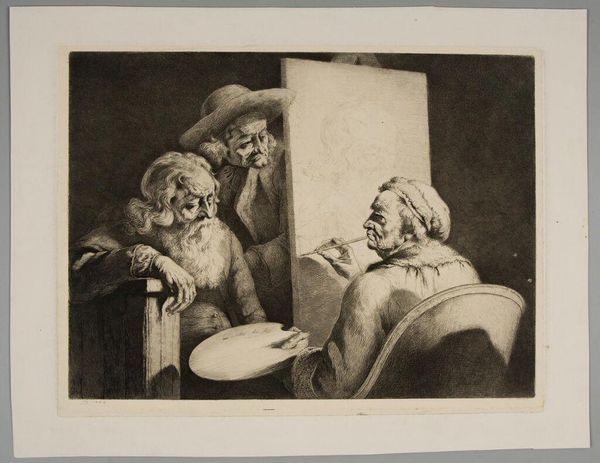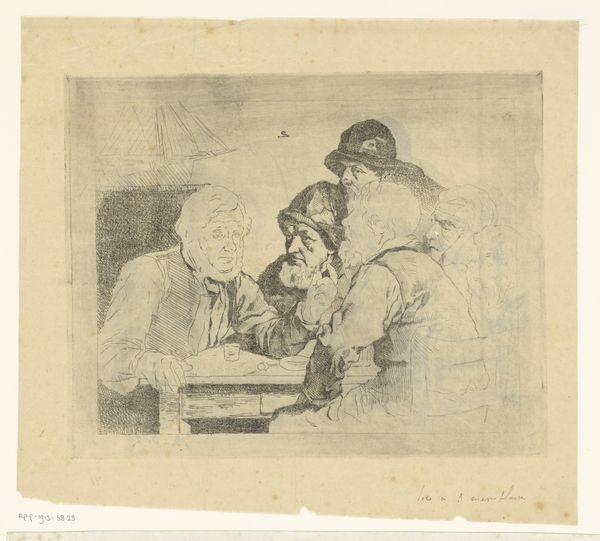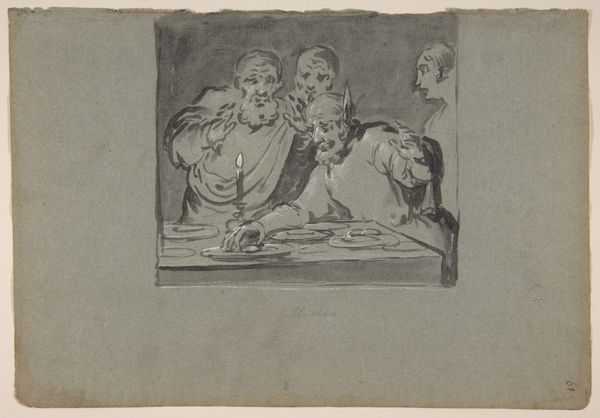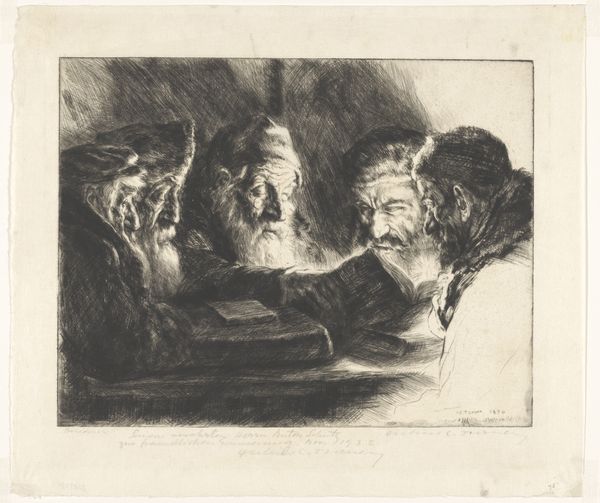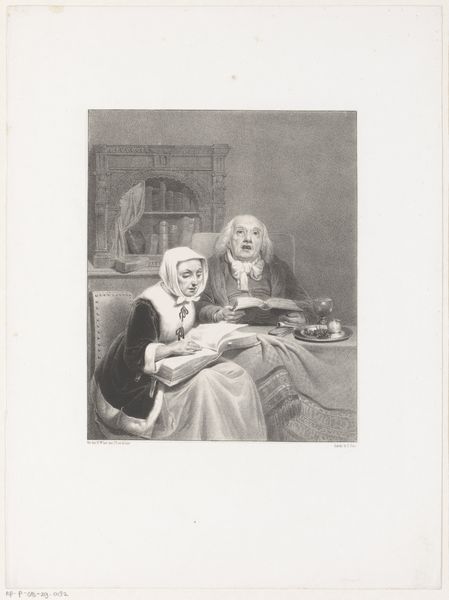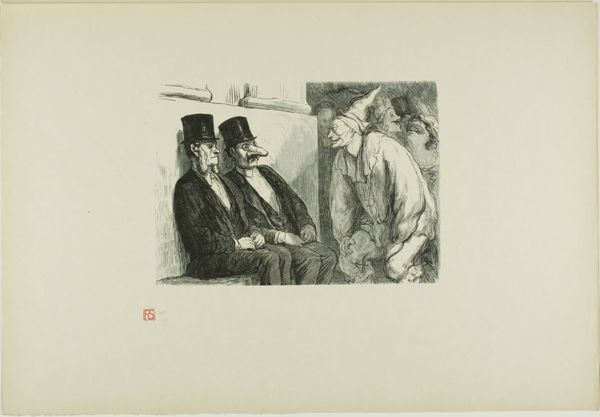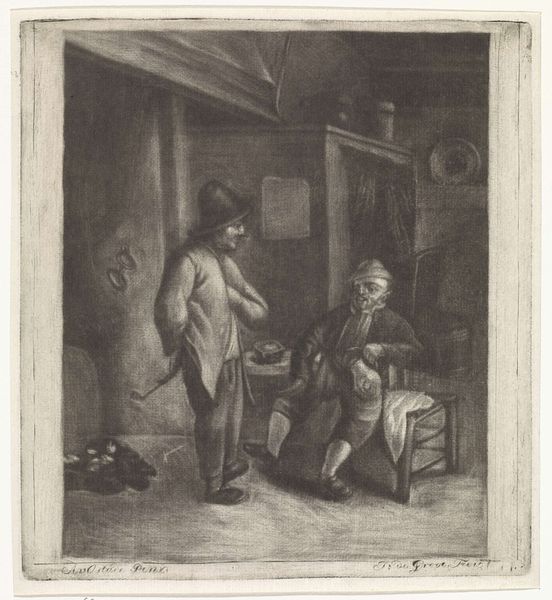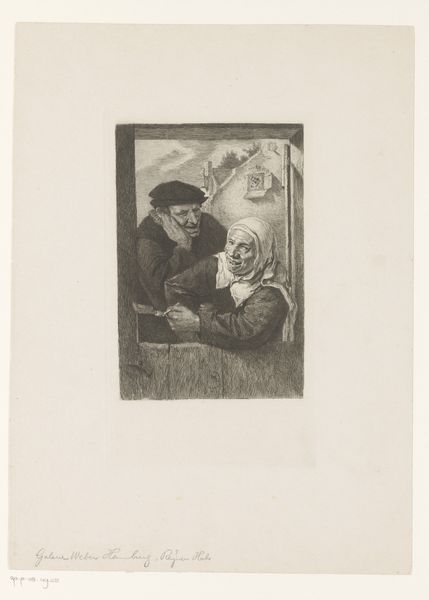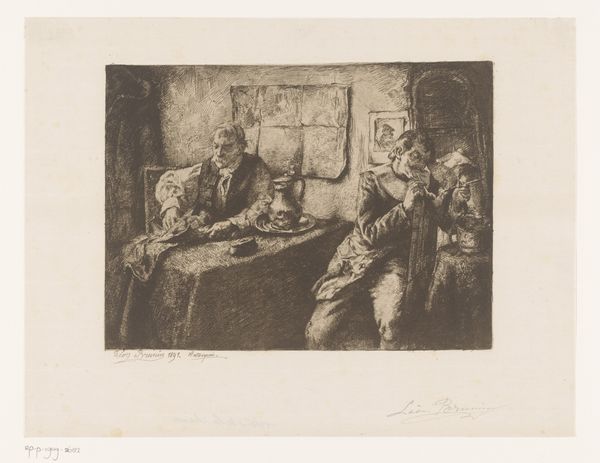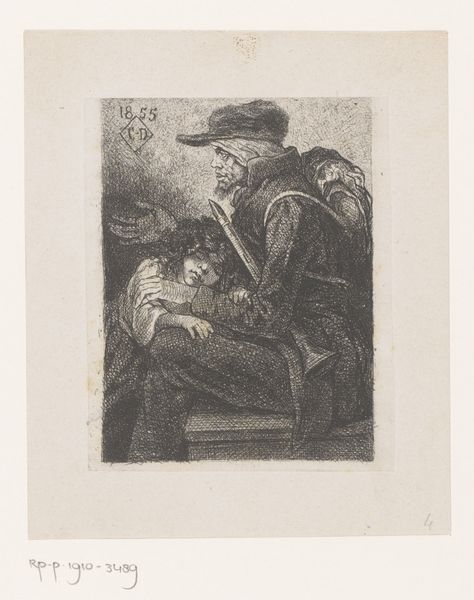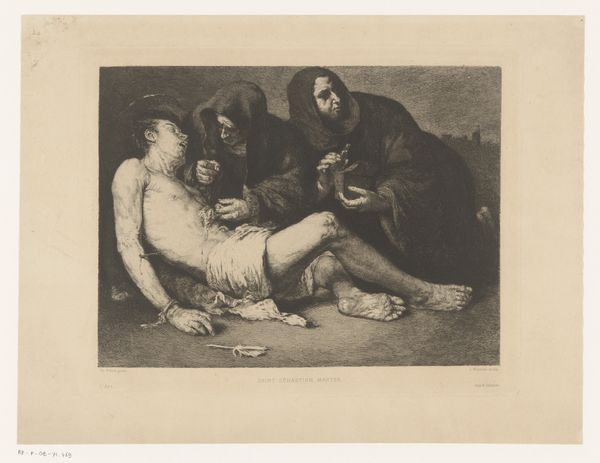
Dimensions: height 262 mm, width 352 mm
Copyright: Rijks Museum: Open Domain
Curator: This etching by Jean Jacques de Boissieu, completed around 1780, is titled "Schilder portretteert een honderdjarige uit Lyon," which translates to "Painter portraits a centenarian from Lyon." It offers a fascinating glimpse into the artist's process, wouldn't you agree? Editor: Absolutely! My initial response is a feeling of intimacy mixed with a touch of almost voyeuristic discomfort. We're privy to a very personal moment, and there's something about the aging subjects that adds an extra layer of vulnerability. Curator: That vulnerability, I think, is crucial. Consider the art market and the aristocratic patronage of the period. A work like this offers, perhaps subtly, a democratization of portraiture, moving away from the idealized portrayals of the elite. Editor: It’s more than a technical exercise, isn’t it? The deep etching gives so much attention to detail. These are bodies marked by age and time; their presence in a work like this demands contemplation on mortality and aging as a social issue, especially regarding the marginalization of elders. How did Boissieu's work intersect with discourses on aging in 18th-century France? Curator: Ah, there’s an interesting question. The rise of scientific interest in longevity, coupled with Enlightenment philosophies emphasizing individual experience, created a space for such representations. It wasn’t just about aesthetic appeal but about documenting humanity in its entirety. We should remember that the subject being painted in the image also seems to have an audience for the artist, standing alongside him to witness the process. This raises questions around the artist's intended role and possible viewership. Editor: I wonder what the centenarian himself thought of it all? Were they aware of how their image might be read? It certainly humanizes the sitter and disrupts that singular historical narrative often found in more traditional portraits. Curator: Indeed. It prompts us to think about who gets to be represented and how, moving beyond simply celebrating power. It hints at changing social dynamics. Editor: Ultimately, Boissieu gifts us not only a record of an artist and subject, but a potent challenge to prevailing notions of beauty, status, and visibility in art history. Curator: A challenge and perhaps, a quiet revolution.
Comments
No comments
Be the first to comment and join the conversation on the ultimate creative platform.
